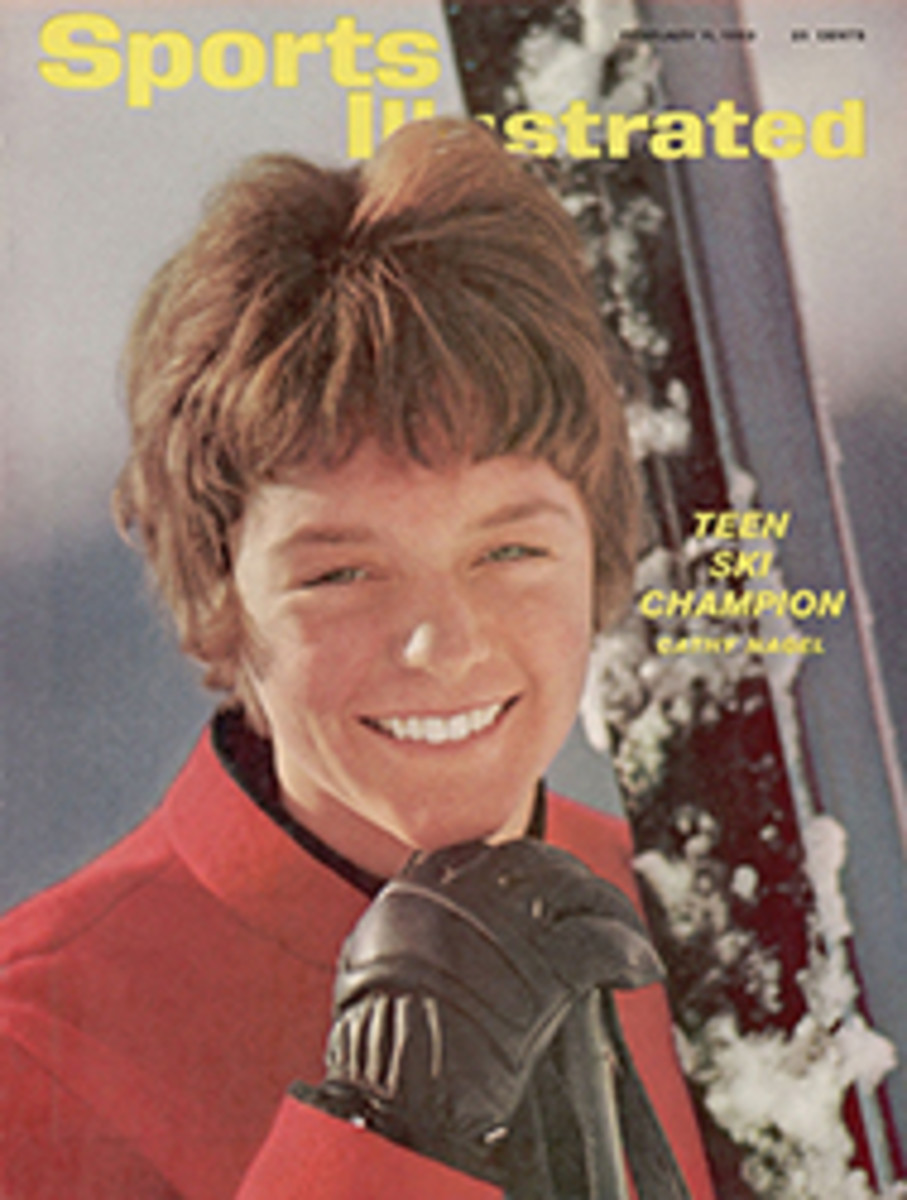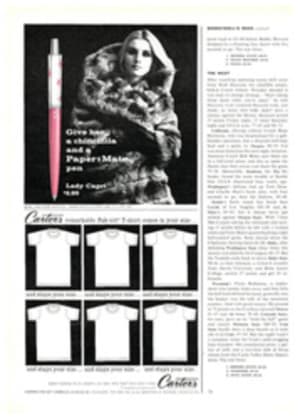
HOW TO SUCCEED AT A DOG SHOW WITHOUT REALLY CHEATING
Favorite bedtime reading for some young Americans today is Fred Gwynne's canine canard. Best in Show. This small book, expanded from an article in SPORTS ILLUSTRATED (Dec. 23, 1957), tells the story of a number of competing show dogs, all but one of whom looked like their owners. The mustachioed dog who won the topmost prize—and here lies the moral—looked like the judge. This week the Westminster Kennel Club show opens once again at Manhattan's Madison Square Garden. The dog that will be chosen best-in-show at that august affair will not, in all likelihood, resemble his judge. "But make no mistake about it," says one longtime observer of the Westminster scene. "More than just a few of the 2,565 dogs entered there this year—as in any year—will be in the Garden as a result of some judge's personal prejudices and some handler's skillful play upon them."
The authority speaking is lean, gray A. Peter Knoop (the K is silent), a Wall Street stockbroker who probably knows more than any other man alive about the warp and woofs of the U.S. dog world. Knoop has been working with dogs for the past 40 years, or ever since he reached his teens. During that span he has been a kennel boy, a breeder, a trainer, a handler, a show judge and a show director. He is show chairman of the tony Westchester K.C. show, which ranks second only to Westminster in prestige, and twice he has handled the best-in-show winner at Westminster, where this year he will serve as a noncompeting steward. Peter Knoop has made most of his friends in the dog business, and he bears his hobby and his colleagues no grudges whatsoever. What sets him apart from other dog men, however, is a willingness to admit what they all know is true but generally refuse to talk about.
"Since the perfect dog has yet to show up at any show," says Knoop, "judging them is like judging girls in a bathing suit contest—it is an art and not a science." It's true that at shows like Westminster the art approaches almost scientific exactness because every dog there has some demonstrable merit. "But it's also true," Knoop adds, "that the farther away you get from the name shows the more frequently you find the little misdeeds and the minor deceits. To win these small shows is, of course, not so important in itself. But they are the ladder rungs that take you toward the top. And it's at the top that you find fame and—if your breed is popular with the public—modest fortune in stud fees, which double and sometimes triple after a Westminster win." While prize money is negligible, stud money can be a powerful incentive. "For the small-kennel man, the one-or two-dog owner, winning important shows can be a make-or-break proposition," says Knoop. "Without a well-known stud, the breeder is simply throwing good money after bad."
There have, of course, been instances of deliberatechicanery in shows—poisoning and laming of the dogs—but, according to Knoop, the sins of the dog show judge are venial sins, often committed without his knowledge, and the offenses of the handlers and owners are less sins than guileful stratagems. A truly inferior dog, for instance, can never win anything. Unless purblind with optimism, no exhibitor would waste his time showing such an animal, and no judge would look at him twice. The devious-ness of the show game comes into play when the top dogs are meeting. At times like these, when all else is even, the handler hopes the judge will fall prey to his own prejudices, his preconceptions and his thoroughly nonobjective preferences, and the handler does his best to give the judge a shove in that direction.
Most dog shows are divided into three major groupings: the breed class, the group class and the best-in-show class. Of the three, says Knoop, breed judging is the hardest and demands the most objectivity on the part of the judge. Standards for the breed are predetermined by national breed clubs, and the judge has only to decide which dog best fulfills the standards. Flagrant attempts to hide physical flaws by white powders, dyes or—as has been tried—surgery are easy to detect and mean disqualification. But there are subtler ways to show off a dog's assets while veiling his liabilities. If a dog is loose-jointed, for instance, a handler may show him on a tight lead. The lift and support of the leash tends to collect such a dog's muscles and to draw in his elbows when he's standing or moving, and it takes a shrewd judge to determine whether the dog is pulling the man or the other way around. Frequently, therefore, a judge will ask that the taut lead be slacked off. If the dog falls down, well, it was a good try.
Another trick is used by handlers whose dogs "sidewheel," or walk with a slight yaw. To counter this minor defect a handler may lead his dog toward the judge at an oblique angle, the way a movie star might show his favorite profile. The illusion given is that the dog is walking straight. "A good handler, whether amateur or professional," says Knoop, "will often win with a dog that another man might have trouble giving to his neighbor."
Those who judge breed classes are picked, sensibly enough, because they are expert in a particular breed. Theoretically, then, they should have no trouble deciding which dog is a fine specimen and which is merely good. This is true in the abstract, Knoop says, but in practice it does not always work. It is possible—and quite likely—that a breed judge has had experience breeding this type of dog. And if he has breeding experience, he's had his share of trouble. "Perhaps his trouble was light eyes in, say, Dobermans, which are considered disfiguring," says Knoop. "Remembering all the expense and trouble he went to trying to breed out light eyes, the judge may severely penalize a Doberman with only a slight trace of lightness. The dog may be nearly perfect in all the other particulars, but the judge has made up his mind: he's light-eyed, therefore he's out. There's nothing really wrong in the judge's decision. It is just that a personal prejudice has made him make it. That particular Doberman may win best-in-show somewhere else. You can flip a coin on which judge is right.
"Smart exhibitors," continues Knoop, "know long before they enter a show what the competition will be and who the judges will be. They weigh that knowledge against their past experience and enter their dogs or not accordingly. Even friendships play a part. Suppose I see the name of a judge in an upcoming show who has been at my house for dinner sometimes. Or maybe I've judged his dog at one time or another—which is within the rules. Or, most important, maybe I've bred one of my bitches to one of his studs—and there is no rule against judging dogs bred in your own kennels, provided one year has passed and they are not registered in your name. In any of these cases it would be foolish to say I didn't have an edge over a guy the judge has never seen before. Unless, of course, the other guy is a famous handler who has a reputation for never showing any but the best of dogs. Then the judge may be intimidated by his reputation and afraid to upset it. Some judges advance a dog they know isn't too good just because another judge who happens to be a friend of theirs gave him a prize in another show and they want to avoid embarrassing the man. In the maelstrom of conflicting interests that is the world of show dogs there are all sorts of situations that are just ripe for what we call 'judging the other end of the leash.' "
The group class brings together dogs of different breeds (sporting dogs, working dogs, terriers, etc.) and, by rights, a group judge is required to be familiar with all breeds in the group. But he may be relatively weak in knowledge of, say, bull terriers. He can't very well go around admitting it, so he makes a brave attempt to come to terms with the problem. The dog is homely, that much the judge is sure of. Beyond that he can only prod, poke and hope the breed judge knew what he was advancing. The bull terrier, however, figures not to do too well.
One might naturally suppose that a group judge would favor the breed he knows best. Wrong, says Knoop. "If I'm judging a group class, I can see the defects in the Dobermans and dachshunds a mile off because I breed them myself. You lose objectivity here simply because you know too much and may demand too much of the dogs."
Eventually, when the group classes have been judged, the chosen few advance to the best-in-show. In one sense, according to Knoop, this is the easiest class to judge because the dogs in the inner circle have already passed through two tough way stations. There are bound to be some first-rate dogs waiting for the nod. It's hard to be wrong, no matter which dog you choose. It is also very easy to be subjective. "In best-in-show," Knoop explains, "you're not only judging dogs, you're judging the other judges and, like it or not, you're trying to judge the opinion of the crowd looking on."
At some big shows the judge may even take into consideration past winners (to allow the same breed to win too often spoils the show's continuing interest and suspense) and the relative social rank of the dogs' owners. A failure to take this last item into account occurred some years ago at a most prominent show, says Knoop, when an exhibitor of pronounced social insignificance won best-in-show. Despite the fact that the dog was acclaimed by all as a remarkably suitable winner, the judge who forgot the other end of the leash was not invited back for several years. "It's hard to be specific about a thing like this," says Knoop, "because people with money can afford the best breeding stock, the best trainer, the best care. They're bound to win more often than the little guy, because they have a head start." Those, like Peter Knoop, who supervise the running of shows, do their best to make dog judging an exact science. But not even the august American Kennel Club, the top authority in all canine matters, can overrule human nature and, as things now stand, it is the whims and foibles natural to humanity that influence much of the judgment at a dog show. Thus, says Peter Knoop, one should not conclude that the best-in-show winner at Westminster is necessarily the finest dog in the U.S. He may well be. On the other hand, he may be just the luckiest.
PHOTO
KNOOP LOOKS OVER DOGS AT WESTCHESTER
THREE ILLUSTRATIONS
ROBERT HANDVILLE

